Multicellular organisms Study guides, Class notes & Summaries
Looking for the best study guides, study notes and summaries about Multicellular organisms? On this page you'll find 2159 study documents about Multicellular organisms.
Page 4 out of 2.159 results
Sort by

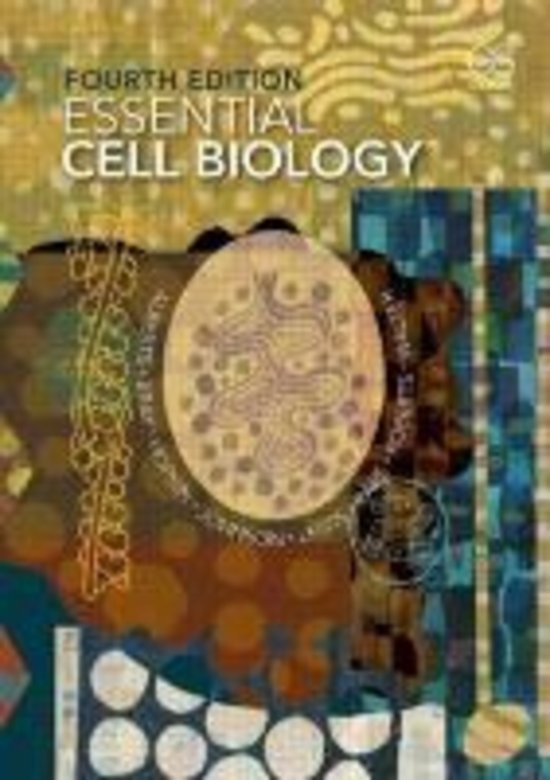
-
Test Bank For Essential Cell Biology 4TH Edition Alberts - All Chapters GradedA+
- Exam (elaborations) • 218 pages • 2022
-
- $22.49
- 1x sold
- + learn more
Test Bank For Essential Cell Biology 4TH Edition Alberts - All Chapters GradedA+. Living systems aree incredibly diverse in size, shape, environment, and behavior. It is estimated that there aree between 10 million and 100 million different species. Despite this wide variety of organisms, it remains difficult to define what it means to say something is alive. Whiiich of the following can be described as the smallest living unit? (a) GENE (b) cell (c) organelle (d) protein 1-2 Indicate wh...
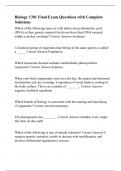
-
Biology 1301 Final Exam Questions with Complete Solutions
- Exam (elaborations) • 28 pages • 2024
-
- $16.49
- + learn more
Which of the following types of cells utilize deoxyribonucleic acid (DNA) as their genetic material but do not have their DNA encased within a nuclear envelope? Correct Answer-Archaean A localized group of organisms that belong to the same species is called a _____. Correct Answer-Population Which taxonomic domain includes multicellular photosynthetic organisms? Correct Answer-Eukarya When your body temperature rises on a hot day, the neural and hormonal mechanisms activate sweating. Ev...

-
Test bank for Essential Cell Biology 4th edition by Bruce Alberts, Dennis Bray, Karen Hopkin, Alexander D Johnson, Julian Lewis, Martin Raff, Keith Roberts, Peter Walter
- Exam (elaborations) • 62 pages • 2022
-
- $13.49
- 1x sold
- + learn more
Test bank for Essential Cell Biology 4th edition by Bruce Alberts, Dennis Bray, Karen Hopkin, Alexander D Johnson, Julian Lewis, Martin Raff, Keith Roberts, Peter Walter. CELLS: THE FUNDAMENTAL UNITS OF LIFE Unity and Diversity of Cells 1-1 Living systems are incredibly diverse in size, shape, environment, and behavior. It is estimated that there are between 10 million and 100 million different species. Despite this wide variety of organisms, it remains difficult to define what it means to s...

-
KSU Biology 198 Exam 3 Questions and Answers Already Graded A
- Exam (elaborations) • 21 pages • 2024
- Available in package deal
-
- $9.49
- + learn more
KSU Biology 198 Exam 3 Questions and Answers Already Graded A When viewing with a(n) ____ microscope, organisms can be alive or dead, you can see larger structures, and the color of the organisms. light When viewing with a(n) _________ microscope, organisms must be dead, but you can view very small things such as ribosomes and protein as well as the texture of organisms. electron The __________ states that all cells come from pre-exisisting cells, are the smallest unit of life, an...

-
APSC 151 Final Exam Prep | 100% Correct | Verified | 2024 Version
- Exam (elaborations) • 47 pages • 2024
- Available in package deal
-
- $14.49
- + learn more
Complex multicellular organisms were not present in which Era A) Neogene B) Paleo-Proterozoic C) Mesozoic D) Precambrian - Neogene For a billion years or more, oxygen being produced by cyanobacteria was completely consumed in the process of A) The creation of chlorophyll B) The creation of phospholipid membranes on clay surfaces C) The precipitation of iron from the ocean waters D) Coal formation - The precipitation of iron from the ocean waters Which of the following igneous ...
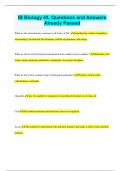
-
IB Biology HL Questions and Answers Already Passed
- Exam (elaborations) • 70 pages • 2024
- Available in package deal
-
- $11.99
- + learn more
IB Biology HL Questions and Answers Already Passed What are the characteristics common to all forms of life? reproduction, carbon, responds to surroundings, Growth and Development, cellular organization, and energy What are the levels of biological organization from simple to most complex? Molecules, cell, tissue, organ, organism, population, community, ecosystem, biosphere What are the 4 most common types of biological molecules? Proteins, nucleic acids, carbohydrates, and lipids...
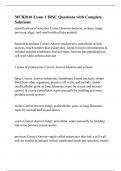
-
MCB2010 Exam 1 IRSC Questions with Complete Solutions
- Exam (elaborations) • 15 pages • 2024
-
- $15.99
- + learn more
classifications of microbes Correct Answer-bacteria, archaea, fungi, protozoa, algae, and small multicellular animals bacteria & archaea Correct Answer-prokaryotes, unicellular & lack nucleus, much smaller than eukaryotes, found in moist environments & isolated extreme conditions, asexual repro, bacteria has peptidoglycan cell wall while archaea does not 2 types of prokaryotes Correct Answer-bacteria and archaea fungi Correct Answer-eukaryotic (membrane bound nucleus), obtain food from ...

-
Biology 103 Unit 1 Test latest questions and answers all are correct graded A+
- Exam (elaborations) • 16 pages • 2024
- Available in package deal
-
- $7.99
- + learn more
Cell - smallest, most basic unit life unicellular - one cell multicellular - many cells emergent property - qualities appear each level organization List the organization of living things. - Atom molecule cell tissue organs organ system organism List the 5 characteristics of living things. - organized acquire materials & energy respond to stimuli reproduce & develop adapt natural selection - organisms become modified evolution - change over time become suited environmentList the...
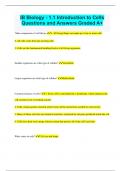
-
IB Biology - 1.1 Introduction to Cells Questions and Answers Graded A+
- Exam (elaborations) • 16 pages • 2024
- Available in package deal
-
- $9.99
- + learn more
IB Biology - 1.1 Introduction to Cells Questions and Answers Graded A+ Main components of cell theory 1. All living things are made up of one or more cells 2. All cells come from pre-existing cells 3. Cells are the fundamental building blocks of all living organisms Smaller organisms are what type of cellular? Unicellular Larger organisms are what type of cellular? Multicellular Common features of cells? 1. Every cell is surrounded by a membrane, which separates the cell contents...

-
IB Biology HL Exam Review Latest Version Already Graded A
- Exam (elaborations) • 16 pages • 2024
- Available in package deal
-
- $9.99
- + learn more
IB Biology HL Exam Review Latest Version Already Graded A Outline the cell theory. Living organisms are composed of cells. Cells are the smallest unit of life. Cells come from pre-existing cells. Discuss the evidence for the cell theory. The nature of scientific theories could be introduced here: the accumulation of evidence that allows a hypothesis to become a theory; whether a theory should be abandoned when there is evidence that it does not offer a full explanation; and what evid...

That summary you just bought made someone very happy. Also get paid weekly? Sell your study resources on Stuvia! Discover all about earning on Stuvia


